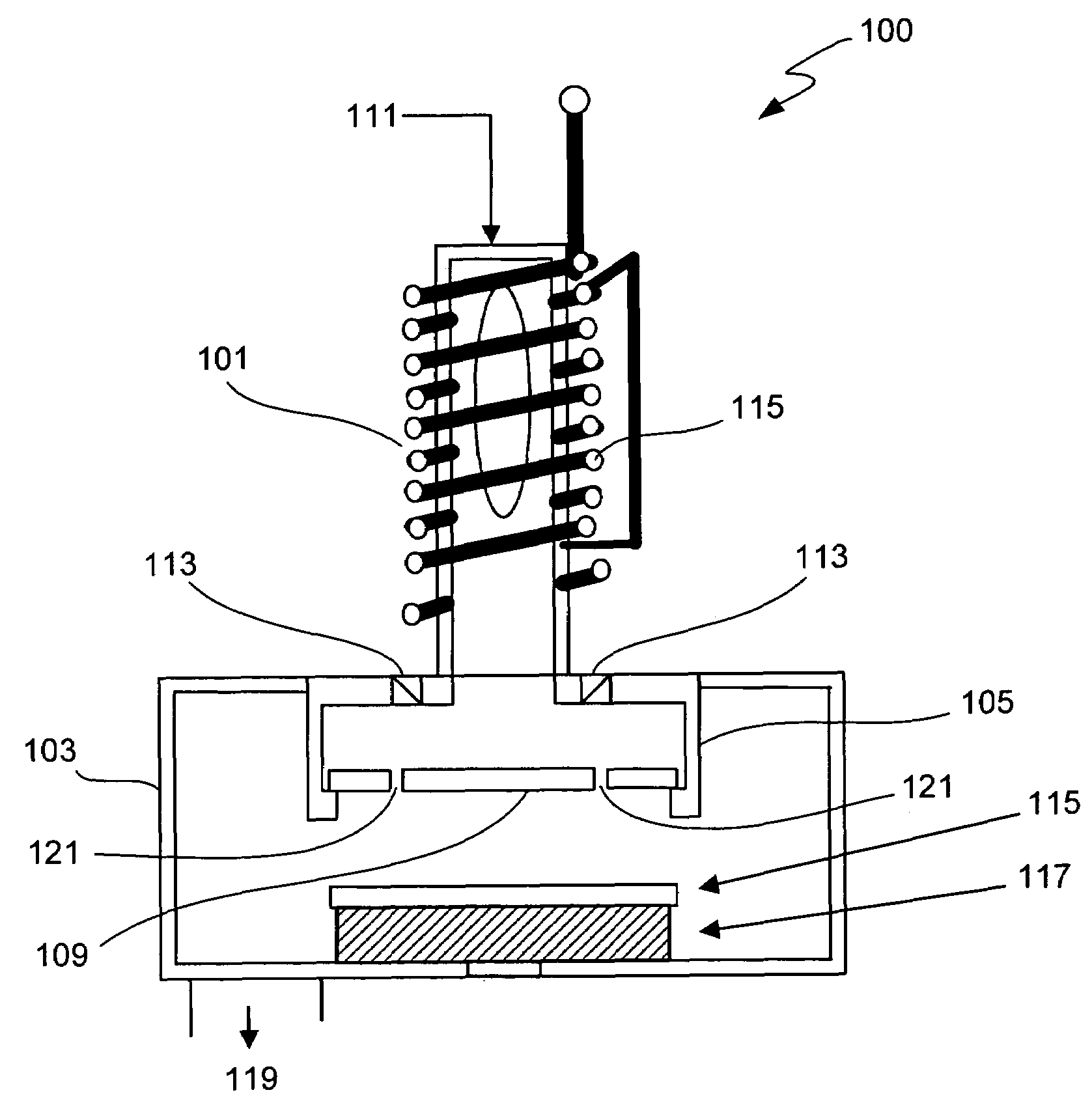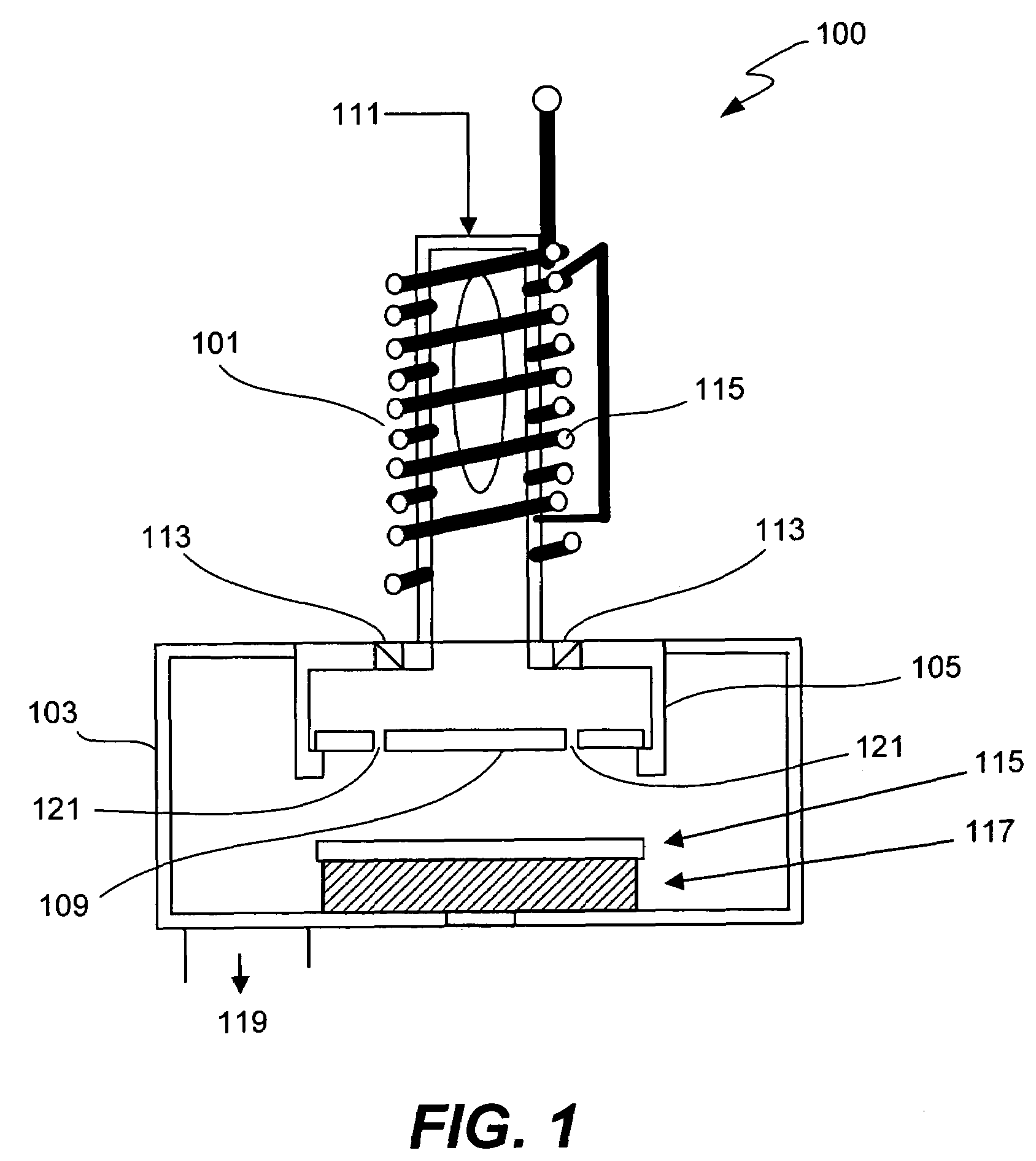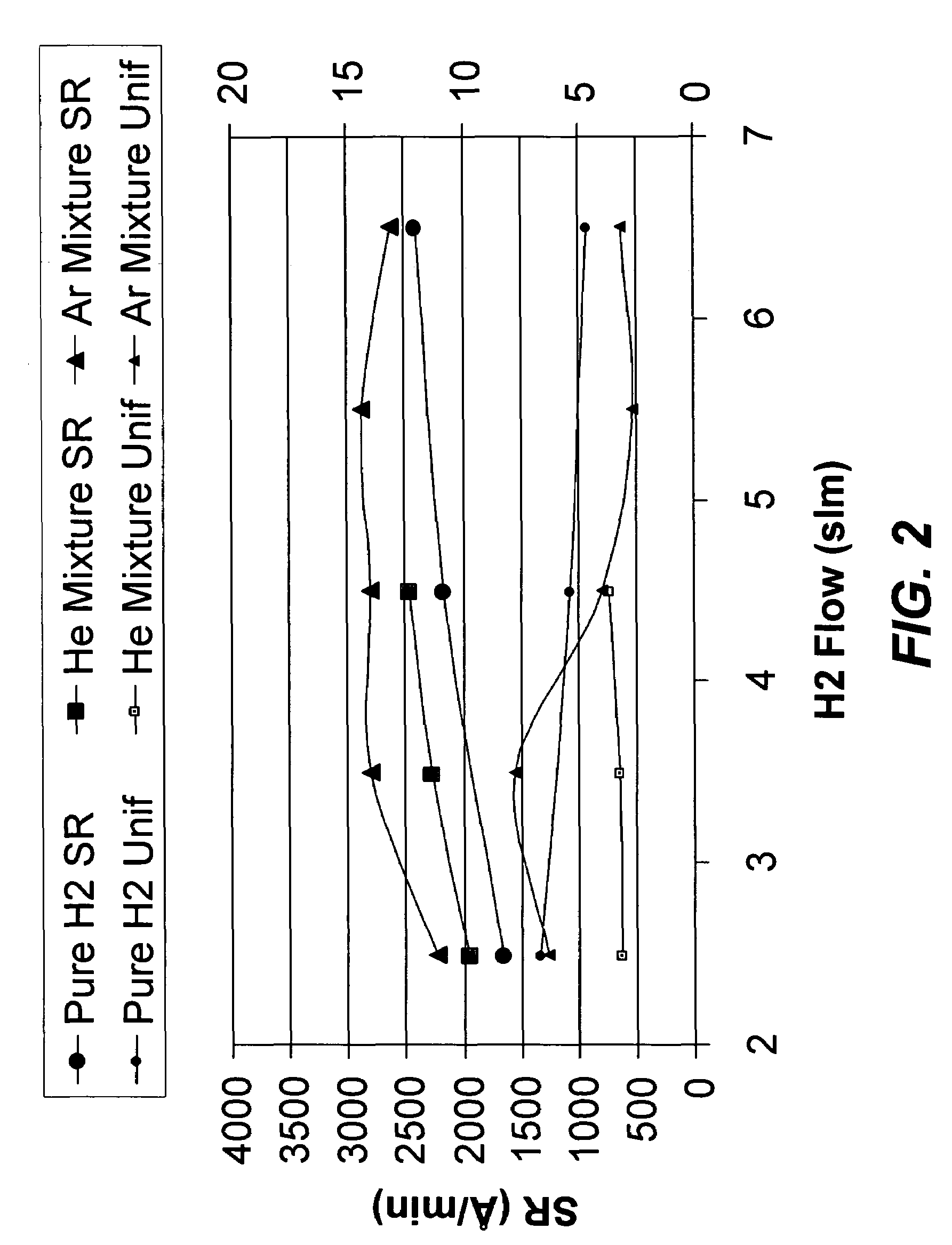Enhanced stripping of low-k films using downstream gas mixing
a gas mixing and stripping technology, applied in the field of stripping photoresist materials, can solve the problems of high oxidizing conditions, unsuitable conventional strip plasma conditions, high hydrogen flow, etc., and achieve the effect of improving strip rate and strip rate uniformity, reducing the required hydrogen flow rate, and improving the strip ra
- Summary
- Abstract
- Description
- Claims
- Application Information
AI Technical Summary
Benefits of technology
Problems solved by technology
Method used
Image
Examples
examples
[0054]300 mm sized wafers were processed (i.e., photoresist stripped) on a strip station. Each wafer was covered with 1.2 μm of photoresist. RF power was set at 1300W and pressure at 1 Torr. 30 sccm of carbon dioxide was introduced into the plasma source with the hydrogen. Flow rate of hydrogen plus inert gas was kept at 6.5 slm. The results are shown in FIG. 2 as described above.
[0055]300 mm sized wafers were processed. Each wafer was covered with 1.2 μm of photoresist. RF power was set at 1500W and pressure at 1 Torr. Argon flow rate was kept at 6 slm. Net strip rate and strip rate uniformity was found for argon / hydrogen rations of hydrogen flow rates of 1 slm, 1.5 slm, 2.0 slm, 2.5 slm and 3.0 slm (i.e. for argon / hydrogen ratios of 6.0, 4.0, 3.0, 2.4 and 2.0). Results are shown in FIG. 7. All examples resulted in net strip rates greater than 3000 Å / min and strip rate uniformities of less than 4%.
[0056]Seven 300 mm wafers were processed on a five-station chamber with RF power set ...
PUM
| Property | Measurement | Unit |
|---|---|---|
| RF power | aaaaa | aaaaa |
| RF power | aaaaa | aaaaa |
| RF power | aaaaa | aaaaa |
Abstract
Description
Claims
Application Information
 Login to View More
Login to View More - R&D
- Intellectual Property
- Life Sciences
- Materials
- Tech Scout
- Unparalleled Data Quality
- Higher Quality Content
- 60% Fewer Hallucinations
Browse by: Latest US Patents, China's latest patents, Technical Efficacy Thesaurus, Application Domain, Technology Topic, Popular Technical Reports.
© 2025 PatSnap. All rights reserved.Legal|Privacy policy|Modern Slavery Act Transparency Statement|Sitemap|About US| Contact US: help@patsnap.com



